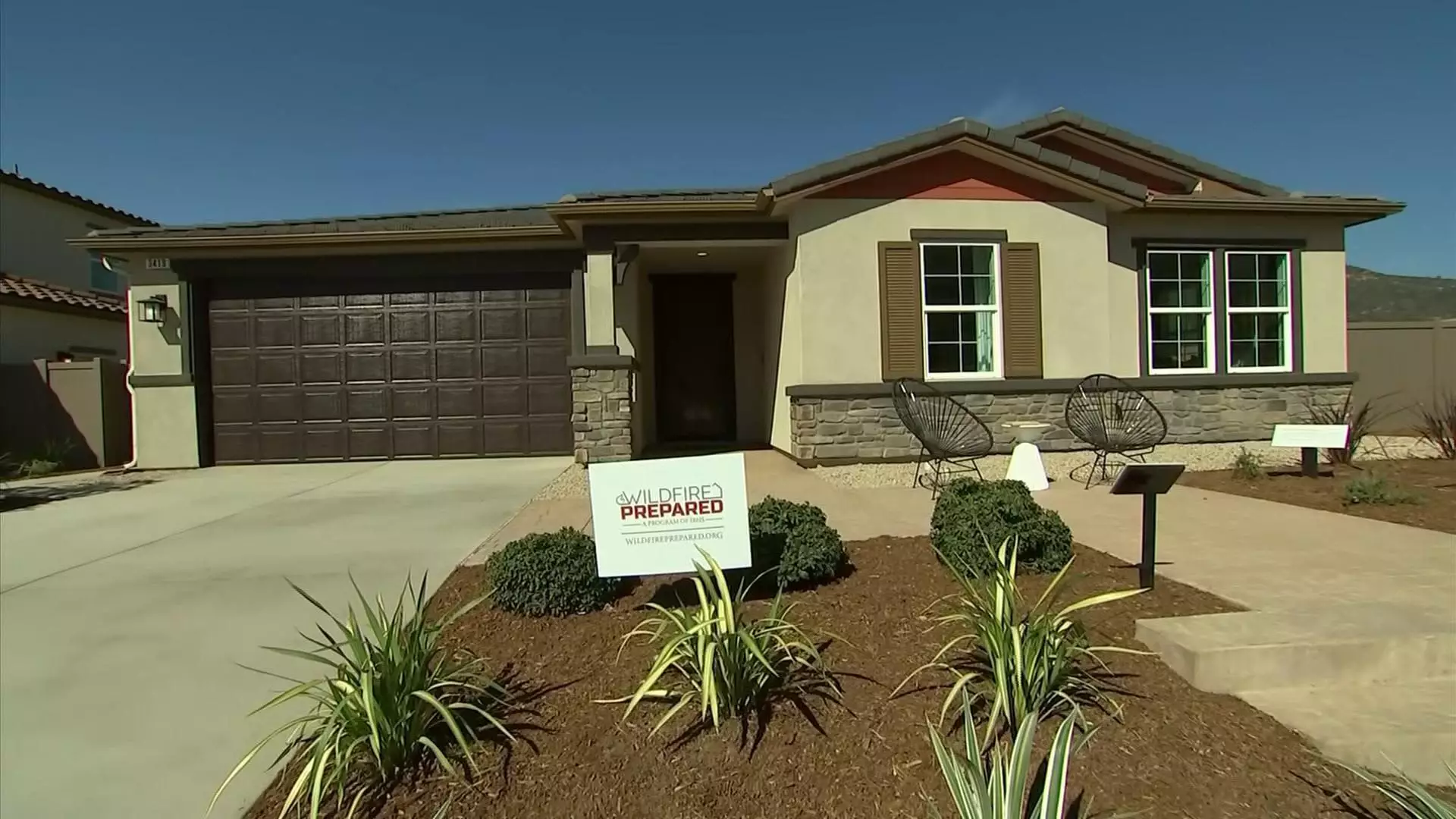California has been on the front lines of climate-induced catastrophes for years, yet it took the shocking destruction of thousands of homes for much of the state to finally muster action. The recent wildfires have highlighted a critical vulnerability: our homes. With insurance rates skyrocketing and homeowners facing less support from insurers unwilling to cover areas deemed high risk, the need for innovation in homebuilding has never been more urgent. KB Home, an influential player in the California housing market, is taking bold strides toward reshaping this narrative, launching what they proudly tout as the state’s first “wildfire-resilient” community in Escondido. But does this development truly serve the needs of the community, or is it merely a response to increasing market pressures?
Transformative Measures in Home Design
In the specific case of the Escondido project, KB Home is not shying away from adopting stringent wildfire resilience standards set by the Insurance Institute for Business & Home Safety (IBHS). This initiative encompasses an array of cutting-edge features aimed at addressing the threats of flying embers, flames, and radiant heat—primary culprits in devastating fire outbreaks. With 64 single-family homes currently under development, each dwelling is designed with fire-resistant components ranging from tempered glass windows to non-combustible siding like stucco and fiber cement. Adding to the toolkit, the community utilizes metal fencing and incorporates strategic defensible space with low-combustible vegetation.
However, this ambitious plan must be viewed through a critical lens. While KB Home’s attempts can be lauded as forward-thinking, it raises questions regarding whether these measures are merely superficial fixes in the face of a much larger systemic issue: the consequences of climate change. Are we investing merely in band-aid solutions for a problem that continues to worsen? Indeed, the seemingly urgent adaptation may come too late for many who have already lost their homes.
The High Costs of Resilience
Current market prices for these new homes range from $1 million to the low millions, which shifts the focus from affordability to exclusivity. While increased safety is undeniably a vital selling point, one wonders if such an investment is reasonable for first-time buyers or even for typical middle-class families. By concentrating efforts on high-priced developments rather than accessible homes, KB Home risks alienating the very demographic that needs protection the most.
Moreover, the additional costs incurred to meet these wildfire standards could deter potential buyers who may otherwise seek a foothold in an already exorbitant housing market. Steve Ruffner, KB Home’s regional general manager, emphasizes a need for innovation in construction to lower costs. Still, the realization of this aim in a systemic manner remains dubious, especially as many communities face financial constraints.
Insurance Dilemma: Are We Losing Ground?
The insurability of these new residences is yet another concern. Roy Wright, CEO of IBHS, notes the ongoing difficulties homeowners experience as insurance companies pull out of high-risk areas. While KB Home’s fire-resilient design may eventually gain traction and help homeowners secure insurance, one cannot overlook the inherent insanity in having to invest so much in safety measures just to have insurance at all.
As more homeowners grapple with the inability to find insurance—and those who do face skyrocketing premiums—the potential for creating cohesive, resilient communities erodes. The urgency behind these new developments, rather than being genuinely community-focused, may simply reflect the meandering path of market forces placing profits before people.
The Future: A Testing Ground for Resilience
KB Home’s Escondido project is being touted as a “test bed” for innovations in wildfire resilience. With naturally spaced homes situated 10 feet apart, the idea is to create a defense against the rapid spread of fire. Yet as we look to the future, the ultimate measure of success will hinge on whether these houses can withstand an actual wildfire event. There is no such thing as a fireproof home, and the ongoing dialogue about climate change and its ramifications for housing must acknowledge the limits of technology.
While this endeavor may represent one promising piece of a much larger puzzle, it is crucial for all affected stakeholders—builders, homeowners, insurers, and even local governments—to unite in a comprehensive approach to combat the challenges posed by climate change rather than simply reacting to its consequences.

